
In order to conserve biodiversity and use the concept of FPGA and IoT, the aim is to not only protect this very critically endangered species of Karnataka but also to monitor it's health and preserve it.
We use FPGA to receive the required information and also monitor the vital statistics of the animal and even monitor the population of this species via GPS and make sure it's habitat also isnt encroached upon.
Project Proposal
1. High-level project introduction and performance expectation
Healthcare and Conservation of Lion Tailed Macaques
Premise: Lion tailed Macaques are one of the most critically endangered species native to South India and primarily Karnataka.
We belong to the urban area of Karnataka (Bangalore), studying in Electrical and Electronics Dept 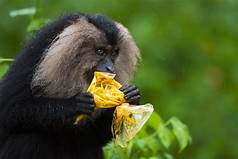
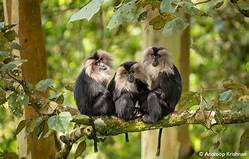 where we are familiar with the technological advancements made in electronics and IoT and wish to implement these advancing technologies in conserving this precious species which enrich our culture and heritage native to our homeland.
where we are familiar with the technological advancements made in electronics and IoT and wish to implement these advancing technologies in conserving this precious species which enrich our culture and heritage native to our homeland.
It is an Old world monkey and generally avoids humans.
Lion-tailed macaques have black hair. It is easily recognised by its silver-white mane that surrounds the head from the cheeks down to its chin. Its face has no hair and is black in colour. Head to body length is about 61 cm and weighs about upto 10 kg, making it one of the smallest among the macaques species. The black tuft is more prominent in males than females with the tail being about 25 cm in length.
The life expectancy for a wild lion-tailed macaque is 20 years while it is 30 years in captivity.
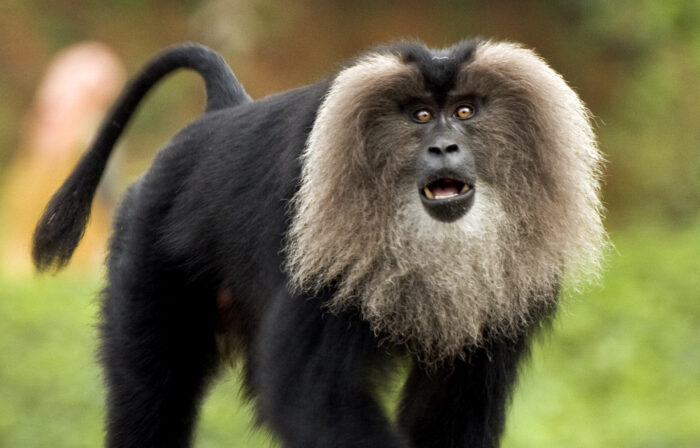
Conservation of the lion tailed Macaque:
As per the assessment carried out by the International Unit for Conservation of Nature (IUCN) it was reported that 3000-3500 of the lion-tailed macaque population was dispersed in Kerala, Tamil Nadu and Karnataka. Its red list categories it as ‘endangered ‘.
Their population range is becoming significantly limited due to spread of agriculture and commercial farming for tea, coffee. Construction of new dams nd irrigational facilities are also a factor in their decline.
Despite conservation efforts, habitat loss remains the key component in their population decline.
(Source- https://byjus.com/free-ias-prep/lion-tailed-macaque/)
Working of the project:
Our project uses the concept of FPGA to process various information such as the heart rate, temperature, blood pressure and uses GPS to monitor its whereabouts in a non intrusive manner.
We use the Cloud Connectivity Kit to store this data in the cloud. Any anomaly in the vital statistics of the animal would be detected and sent to the Government Authority or whomsoever concerned.
This project uses the concept of FPGA, IoT interfaced by the cloud connectivity kit.
Expectations:
We can expect accurate results regarding the health, temperature monitoring and even habitat maintainence from this project. This in turn conserves the animal habitat as well as aids us to be on the look out regarding the health and well being of the macaque.
2. Block Diagram
Our block diagram is split into two functional aspects:
1. Habitat monitoring
2. Health monitoring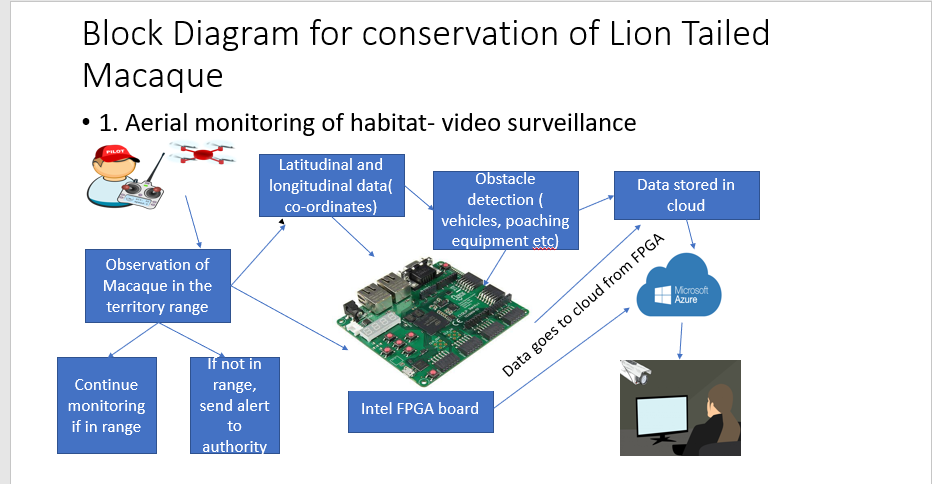
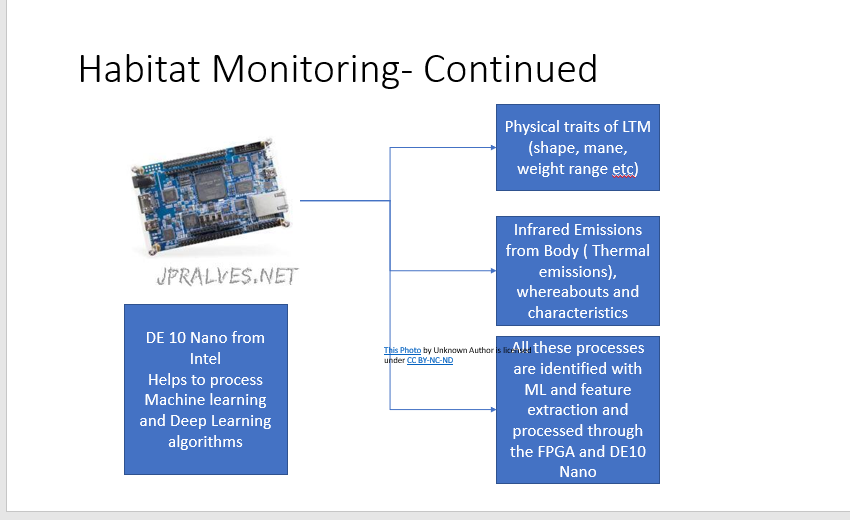
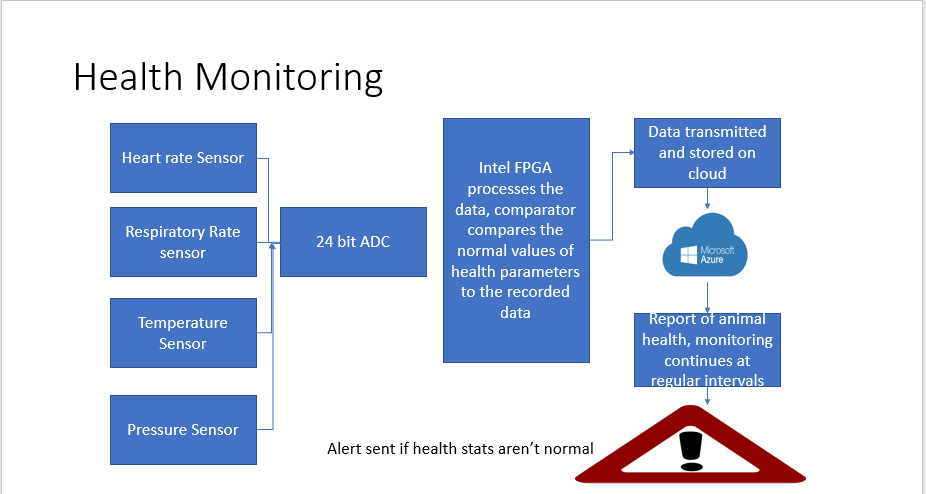
3. Expected sustainability results, projected resource savings
Expected Sustainability:
1. Monitoring of the Lion Tailed Macaque's health as well as heart rate, blood pressure etc saves a lot of time from an intrusive monitoring of its habitat.
2. The GPS employed would not only monitor the habitat in a non-intrusive manner but even would work on maintainence of the habitat thereby preserving the eco-system.
3. Machine learning and other algorithms employed would not only help in extraction of features such as sound, heart beat etc but it would provide accuracy as well so everything would be monitored at once.
4. In this manner not only is the health of the animal monitored with timely alerts to deliver the proper diagnosis, even the ecosystem and biodiversity will be conserved.
Sustainability results, resources and savings:
Let's break these down bit by bit.
How is sustainability maintained through this project?
1. Since the lion tailed macaque is an old world monkey and the most endangered primate, this project would be useful in assessing the current situation as well as taking even advanced measures in conserving them.
2.As we monitor its habitat, we can take even more precise and accurate measures to avoid illegal encroachment or poaching of these animals and even conserve the habitat, thus contributing as much as we can to conserve biodiversity
3. Why the lion tailed macaque specifically?
- A lot of studies and research has found that lion tailed macaques are extremely useful in deposition of seeds and helping fauna develop. When they transport fruit in cheek pouches by consuming them long distances from they gather them, they drop these seeds into the ground and contribute heavily towards the survival and propagation of many plant species in their environment. This is of extremely huge importance in conserving the biodiversity of other fauna as well.
- These species are extremely clever- they use leaves to remove poisonous stingers from chrysalises before eating them. They have 17 different voice patterns as well as body language used for communication- all these to be explored and these information can be extracted through our little project idea as well.
- SInce they are hunted widely for their meat, mane and fur, there are close to only 4500 of these in the entire world, most of them being concentrated in southern parts of India.
- Ofcourse, we would love to conserve other species of endangered animals as well, but we are focussing these resources we have to this animal at the moment because of the above reasons.
Resources:
How are the resources conserved ?
- Since we are using the resources provided by Intel for our venture, it would not only ensure high accuracy, efficiency, it would also decrease the strenuous and error prone method of manually surveying the population of these lion tailed macaques which are generally hard to survey.
- While timely help is provided to these animals, it makes sure that they arent isolated and driven to population reduction, when there are already barely thousands left
What are the savings achieved?
Most importantly:
- The species is conserved and also helps in ameliorating a better environment for their growth, reproduction and survival.
- It also ensures the survival of other species of fruits and plants, so that they are not endangered or slip into that situation of becoming endangered;
- It helps in conserving the habitat and also helps in assessing how many more trees to be planted, or what other measures can be taken.
- This is also very economical as many tasks can be achieved through one project ( with improvements ofcourse).
- Since its monitoring a sufficiently wide range, we neednt place a whole lot of cameras and man all of them , thereby saving a lot of manpower and associated resources.
4. Design Introduction
1. The FPGA provided by Intel is used because of these reasons:
a. FPGAs in general aren't application specific, so we can carry out many processes simultaneously.
b. FPGAs are easily programmable ( reprogrammable as well!) so, any changes required can be carried out smoothly and in a cost effective manner.
c. We use Verilog HDL to program the required conditions and parameters to monitor the LTM (Lion tailed Macaque)
2. Why use the DE 10 Nano?
DE 10 Nano is very helpful in processing Machine Learning and Deep Learning algorithms used to recognise the macaque, its shape, height, weight range and also can detect the areas it can enter (in forest regions etc). If it strays away from the forest and enters regions where there is vehicular activity , alerts will be sent to the concerned officials.
3. Why use Microsoft Azure?
Microsoft Azure cloud stores the data that is received by the various FPGA modules and then through the user interface, we can access as well as assess the information received and thereby make more efforts to conserve these species.
4. Various other Design Criteria:
a. The body temperature, normal blood pressure etc are all noted and with respect to these, the health stats are monitored. Through the body heat emitted by this animal and even by its physical contact with the surroundings, we can get to know its heart rate etc. The main criterion is that we carry out this venture without being intrusive to its habitat or physical body.
b. We make sure the habitat can be maintained through consistent monitoring and either through the sensors placed we can analyse its blood pressure, body temperature, and then get its health status.
c. If the animal is healthy, the monitoring is continued at regular intervals.
d. If the comparator detects a difference in its current health stats and the reference value, the alerts are sent to the officials.
e. Through aerial monitoring, we can also observe if any illegal poaching is taking place. Any intrusive motion will be detected by the FPGA and DE10 Nano and likewise, alerts will be sent.
5. Functional description and implementation
Our project is split into 2 major components them being:
1. Recognition of the lion tailed macaque using aerial monitoring or a specified camera like OV7670 and interfacing that with the FPGA
2. Assessing the environmental conditions and health statistics of the lion tailed macaque(LTM) and setting up an interactive dashboard from the data assessed through the cloud, by using the Azure cloud services platform and these are connected to the FPGA with the cloud connectivity kit.
1. Recogntion of LTM using Aerial monitoring :
Here, we make use of a camera with a sufficiently large range to identify the LTM's in their habitats.
- The reason we do this is so that it is non-intrusive as well as cost effective as one needn't set up a large number of cameras at specified spots.
- Saves manual labour as we needn't set up and manage these cameras constantly.
- Reduces human error as well
- Since these LTM's usually avoid humans, there is a lesser chance of scaring them away out into the open ( like roads or highways by chance) by human interacting of setting up these cameras and monitoring sensors.
- We use Machine Learning and Deep Learning Models to recognize the LTM and the digital signal processing unit to process the data
- Some of the codes we used as a reference material as well, are listed here:
- https://drive.google.com/drive/folders/1bp1Whv4TBn35Jyh4t11JJl2o2jhhWrW-?usp=sharing
- We feed in around 200,000 images of the LTM so that the recognition of the species happens with a sufficient amount of accuracy.
- Screenshots below are taken from research papers as to how we learnt the interfacing of the OV7670 camera with the FPGA:
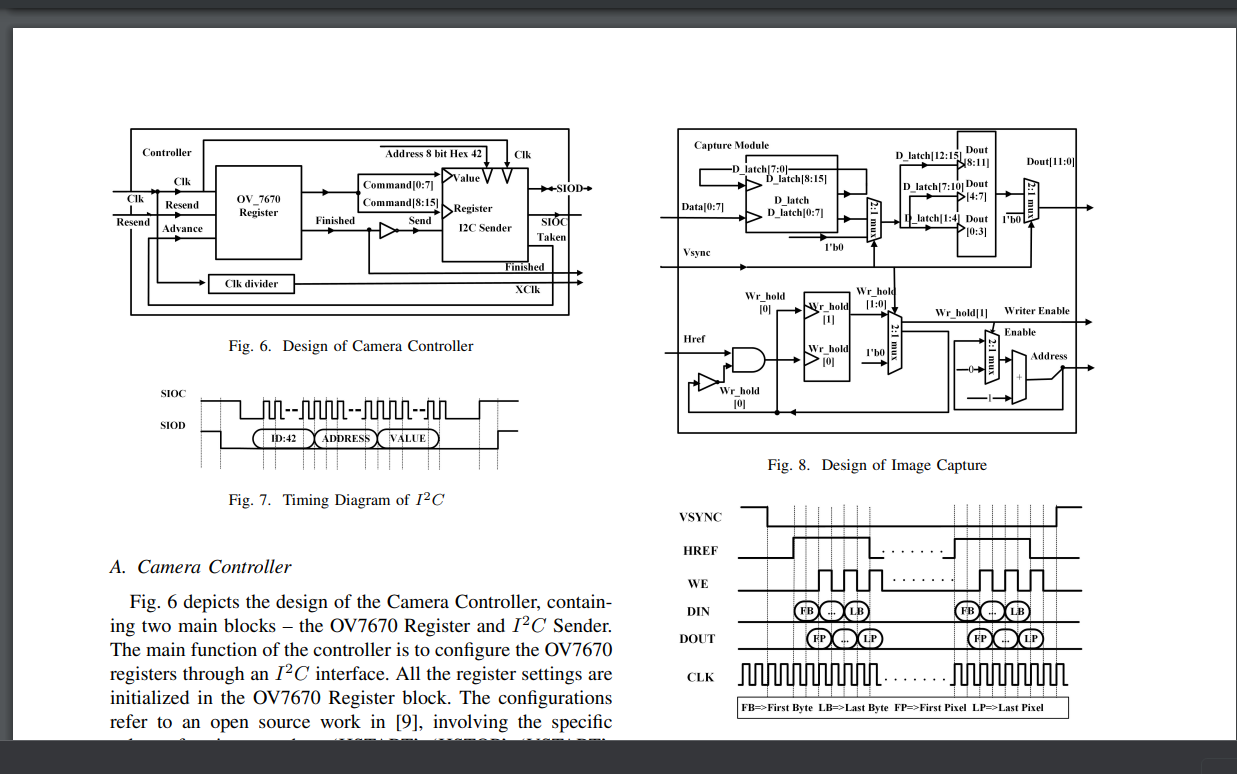
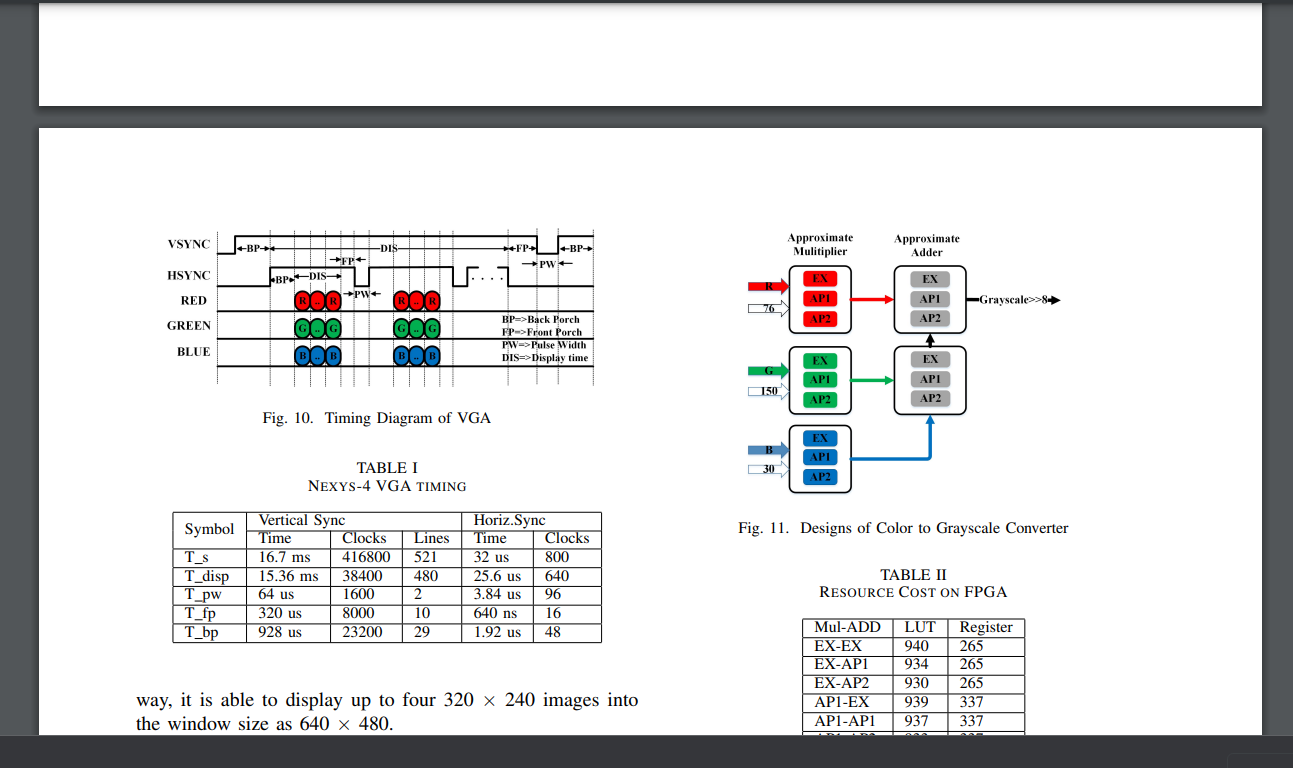
The source code for OV7670 interface is run using Xilinx vivado:
.png)
The next part of the project is assessing the environmental conditions as well as monitor the health statistics of the LTM.
2. Monitoring and assessing environmental conditions and health statistics of the LTM:
Here, we assess the parameters such as:
1. Temperature 2. Motion 3. Collisions/Accidents using Motion sensing (acclerometer)
Temperature Sensing:
Here we use Verilog code to assess the temperature and send alerts to the concerned.
The data is stored on the cloud and is updated as regularly as possible.
The fundamental idea is, if the temperature of the species deviates from its normal body temperature (either higher or lower), the concerned personnel get alerted.
If the temperature is normal- send "Normal"
If it is higher/lower: Send : The temperature is higher/lower
And all these data get stored on the cloud.
Next, we implement the motion sensor and accident detection using accelerometer.
Motion sensing is done by interfacing the motion sensor with the FPGA using GPIO pin and the position of the LTM is assessed by using a GPS module.
The accelerometer also detects if there's any collision or impending accident and also provides the latitudes and longitudes with the help of the GPS module.
There is also an LCD display to display the latitudes and longitudes (Just in case) however, we use the same cloud services to store all these data simultaneously.
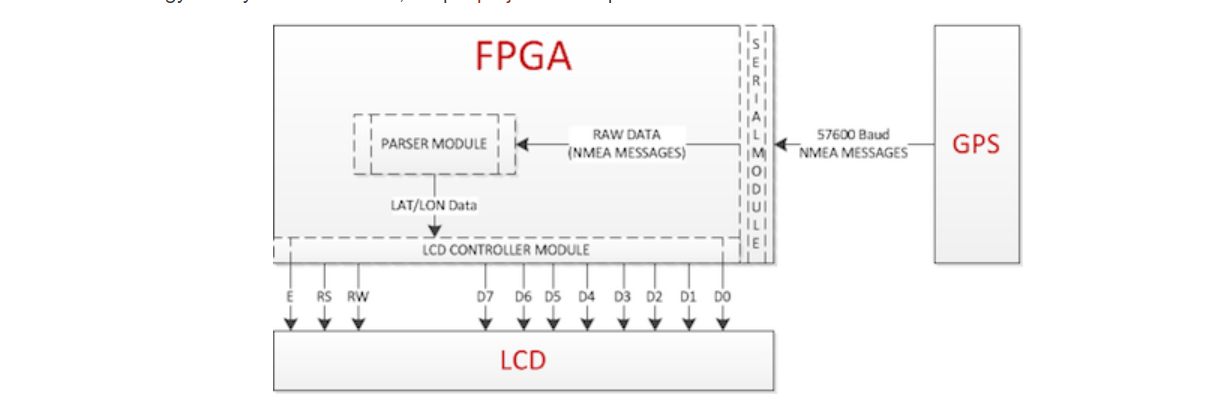
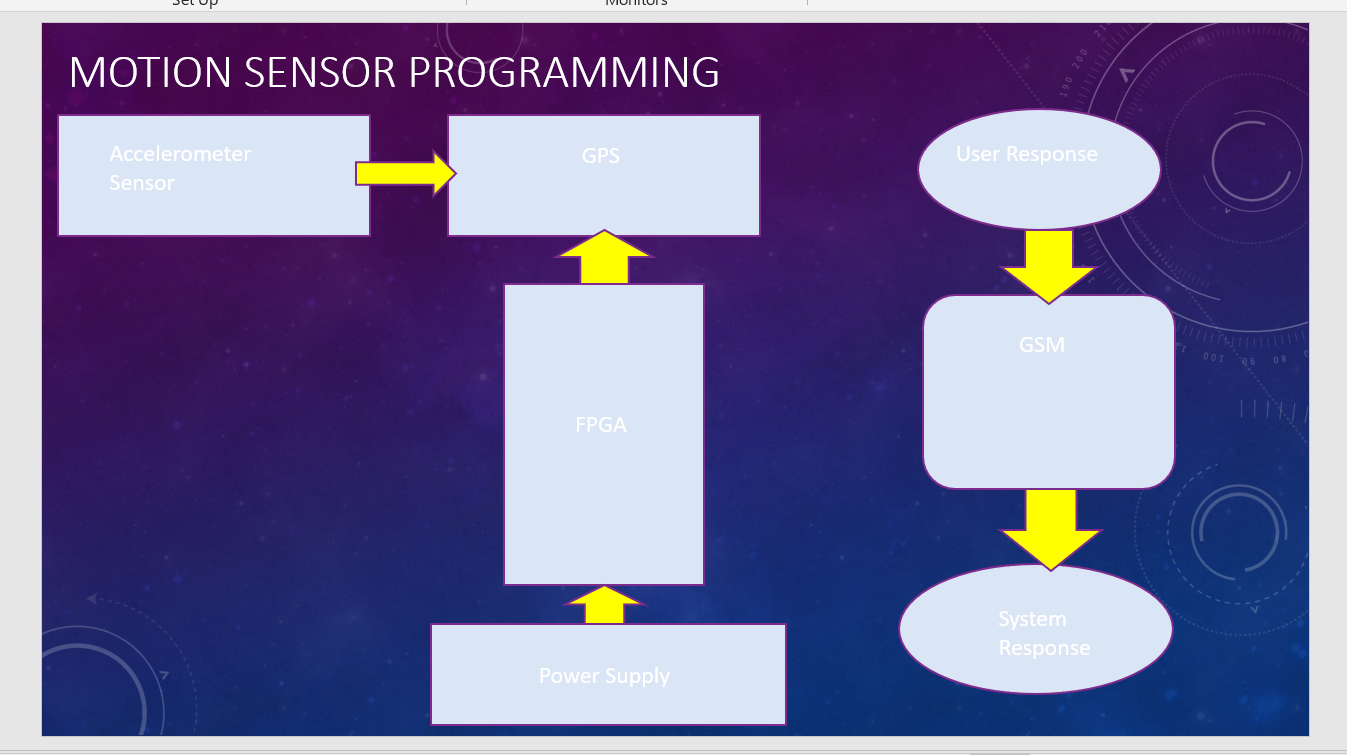
So, overall all these parameters help in holistically defining the whereabouts as well as the statistics of our primate friend.
Here is a summarized image of how we have used the parts of the FPGA for the implementation of this project:
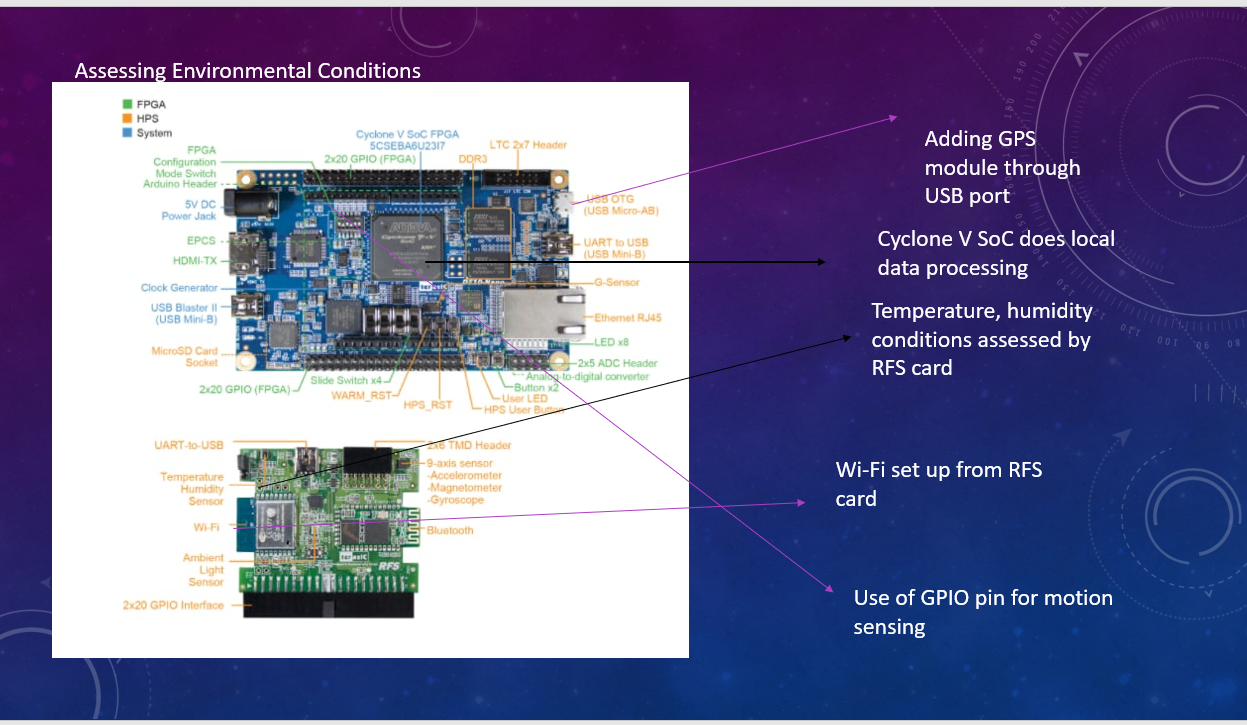
6. Performance metrics, performance to expectation
Performance metrics:
1. Machine learning helps in detecting and recognizing the animal to a precise extent, along with its population statistics in that area.
2. Lesser number of pins used and since we have an additional DSP unit, it increases the precision of the video surveillance as well as image processing.
3. Entire project can be implemented using just a few blocks of codes ( multiple project files used on Xilinx)
4. More economical as it reduces the need for placing multiple sensors
5. Reduced human efforts
6. Real time and consistent updation of data
7. Records of the previous data obtained also maintained.
.png)
.png)
.png)
.png)
7. Sustainability results, resource savings achieved
Sustainability results:
1. Most importantly, since all the statistical data is obtained by the azure cloud services through the FPGA, there is timely updation and this ensures proper action for the conservation of the species.
2. Cost effective, as discussed in other sections.
3. Transparent, real time data updated so even the pattern of these macaque's diet etc can be noted, which is out of scope of this project currently.
4. Lesser memory usage and environment friendly.
5. The LTM population is thereby conserved through this project, hopefully.
6. Our little project aims to bring about a change in the ecosystem as well, since the population of these LTM's are monitored, it can aid in deciding how to preserve them even further by regularly bringing in veternarians, etc and further measures can be taken.
8. Conclusion
Conclusions drawn:
1. Usage of FPGA saves a lot of time as the data can be pre-processed, processed, run and saved parallelly, data can be accessed and assessed much faster.
2. Real time updation takes place.
3. Can be extended for more parameters due to flexibility.
4. Plays an eco-friendly role in saving LTM population, which is the most important aim , as it preserves biodiversity as well as our cultural heritage.
Also, I'd like to thank the Intel Innovate FPGA team for giving us this incredible opportunity and this huge platform, especially since we are undergraduate students, we received this huge exposure to various ideas and really enjoyed learning various skills in implementing this little project of ours and we can only hope it'd be as useful as possible.
0 Comments
Please login to post a comment.